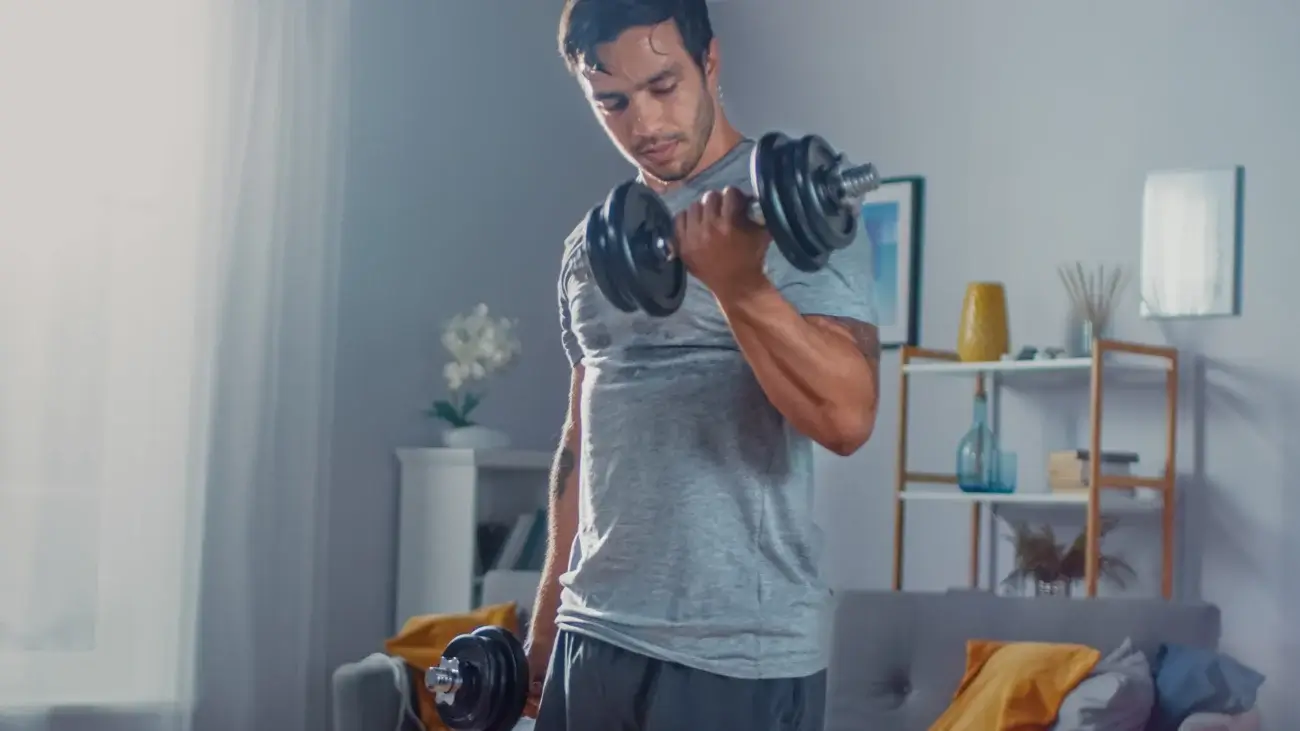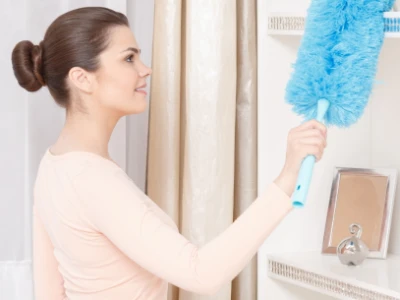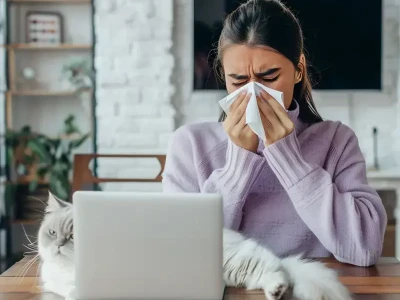Adult Indoor Allergy Causes, Symptoms, and Relief
Make indoors more comfortable by reducing allergy triggers

There’s no place like home … for allergies! Just stepping indoors — at home, work, or school — exposes you to numerous allergens.1 An allergen is any substance which produces an allergic reaction.2 Millions of people suffer year-round because of indoor allergens.3 These culprits include dust mite droppings, animal dander, cockroach droppings and molds.3 So basically, You can control indoor allergens with cleaning and reducing allergens in your home.2
Signs and symptoms of indoor allergies
An allergic reaction is the result of your immune system going on the defensive. When it detects an allergen, it produces antibodies called Immunoglobulin E (IgE). In response, your cells release chemicals to fight the allergens, which result in your allergy symptoms.3
The most typical symptoms of indoor allergies include:3
Runny nose or itchiness in your nose.
Itchy mouth, throat, ears and eyes
Sneezing.
Stuffiness.
Here’s where most indoor allergens hide:2
Damp and Bedding.
Indoor plants
Pets
Pillows and bedding you can’t wash it in hot water
Soft furniture
Stuffed toys
Mattresses that aren’t in allergy covers.
Wall-to-wall carpet.
The most common indoor allergy triggers — and what to do about them
Dust mites
More than 95 % of the allergen accumulating in mite cultures is associated with fecal particles.4
How to control dust mites:2
Keep surfaces clean and uncluttered.
Avoid wall-to-wall carpet — use low-pile carpets, washable rugs, hardwood, linoleum, or tile.
Avoid heavy drapes.
Avoid overstuffed furniture.
Use sealed, allergen-resistant covers on your pillows and mattress.
Wash bedding, pillows, and stuffed toys in water that’s at least 130°F; dry them in a hot dryer.
Indoor mold
The common indoor mold and mildew that cause allergies thrive in dampness. You’ll find them in moist basements, bathrooms, or anywhere with leaks.2
How to reduce mold:
Reduce moisture in the bathroom, kitchen, and other areas where there is a lot of water.2
Don’t run your showers for a long time before bathing.2
Use dehumidifiers.2
Limit yourself to a few house plants.2
Fix all leaks and other causes of damp areas.2
Remove mold from hard surfaces with water and detergent or, if necessary, 5% bleach; let them dry completely.3
Pet dander
There are no breeds of dogs or cats that are 100% allergen-free — not even the hairless ones. That’s because you don’t react to fur, but to allergens in saliva, dander (skin flakes), or urine.3
How to manage pet dander:
Try to minimize contact with pets.3
Keep pets out of your bedroom.2
Wash and change pet beds and toys often.2
Bathe and brush your pets often and wear a mask when you groom them.2
As with dust mites, vacuum carpets often or replace carpet with a hardwood floor, tile or linoleum.3
Before getting a pet, ask your allergist to determine if you are allergic to animals.3
Cockroaches
The World Health Organization identifies 12 distinct allergens carried by cockroaches.4
How to control cockroaches:
Do not leave food or garbage uncovered.2
Use poison baits, boric acid, and traps instead of chemicals, which may irritate your sinuses and/or asthma.2
Block crevices, wall cracks, and windows where they enter.3
Fix and seal leaks.3
Keep food in lidded containers.3
Put pet food dishes away after your pets are done eating.3
Vacuum and sweep after meals.3
Wash dishes immediately after use.3
Clean under stoves, refrigerators, or toasters where crumbs can accumulate.3
Wipe off the stove, cupboards, and other kitchen surfaces regularly.3
A couple extra tips to minimize indoor allergens
It’s nearly impossible to completely avoid indoor allergens. But there are ways to reduce them.
- Keep the air as clean as possible:

Telfast® is here to help fight indoor allergies symptoms.5
Telfast® helps you live better life by relieving many common indoor allergy symptoms. If you experience sneezing, runny nose, itchy, watery eyes or an itchy nose or throat, Telfast® can help.⁵
And if you also have nasal congestion, or swelling of nasal passages, check out Telfast-Decongestant®.7
Now you can feel more at home.
Telfast® is non sedating⁵, the allergist-recommended Over the Counter (OTC) oral second generation/ less sedating antihistamines for patients with AR and primary complaints of sneezing and itching. OTC oral antihistamines for the adults..6
Recommended Reading
1. Indoor environment, Available at: https://www.erswhitebook.org/files/public/Chapters/10_indoor_environment.pdf ;last accessed:30/3/2022.
2. Asthma and Allergy Foundation of America, Control indoor allergy, Available at: https://www.aafa.org/control-indoor-allergens/; last accessed:30/3/2022.
3. American Academy of Allergy, Asthma & Immunology, Indoor Allergens, Available at: https://www.aaaai.org/tools-for-the-public/conditions-library/allergies/indoor-allergens-ttr ; last accessed:30/3/2022.
4. Pomés A, Chapman MD, Wünschmann S. Indoor allergens and allergic respiratory disease. Current allergy and asthma reports. 2016 Jun;16(6):1-0.
5. Ministry of Health, Telfast approved leaflet, approval date 29/11/2018.
6. Seidman MD, Gurgel RK, Lin SY, et al. Clinical practice guideline: allergic rhinitis. Otolaryngology–Head and Neck Surgery. 2015 Feb;152(1_suppl):S1-43.
7. Ministry of Health, Telfast Decongestant approved leaflet, approval date 9/6/2019.
Approved by Egyptian Drug Authority: HF0253OA3948/072025. Invalidation date: 28/07/2027. Kindly report any violated online promotional, educational and awareness material not having this message to The General administration for Regulation of Marketing & Advertising Materials at: www.edaegypt.gov.eg

HF0253OA3948/072025
28/07/2027











